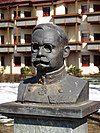User:BusterTheMighty/sandbox
| No. | Portrait | Vice Chancellor (Birth–Death) |
Took office | Left office | Time in office | Party | Chancellor | Cabinet | Ref. | |
|---|---|---|---|---|---|---|---|---|---|---|
| 1 | Jodok Fink (1853–1929) | 15 March 1919 | 24 June 1920 | 1 year, 101 days | CS | Karl Renner (SDAPÖ) | Renner II–III | [1] | ||
| 2 | Ferdinand Hanusch (1866–1923) | 7 July 1920 | 10 November 1920 | 126 days | SDAPÖ | Michael Mayr (CS) | Mayr I | [2] | ||
| 3 | Eduard Heinl (1880–1957) | 10 November 1920 | 20 November 1920 | 10 days | CS | Michael Mayr (CS) | Mayr I | [3] | ||
| 4 | Walter Breisky (1871–1944) | 20 November 1920 | 31 May 1922 | 1 year, 192 days | CS | Michael Mayr (CS) Johannes Schober (Ind) himself Johannes Schober (Ind) | Mayr II Schober I Breisky Schober II | [4] | ||
| 5 | Felix Frank (1876–1957) | 31 May 1922 | 20 November 1924 | 2 years, 173 days | GDVP | Ignaz Seipel (CS) | Seipel I–Seipel II–Seipel III | [5] | ||
| 6 | Leopold Waber (1875–1945) | 20 November 1924 | 20 October 1926 | 1 year, 334 days | GDVP | Rudolf Ramek (CS) | Ramek I–Ramek II | [6] | ||
| 7 | Franz Dinghofer (1873–1956) | 20 October 1926 | 19 May 1927 | 211 days | GDVP | Ignaz Seipel (CS) | Seipel IV | [7] | ||
| 8 | Karl Hartleb (1886–1965) | 19 May 1927 | 4 May 1929 | 1 year, 350 days | Landbund | Ignaz Seipel (CS) | Seipel V | [8] | ||
| 9 | Vinzenz Schumy (1878–1962) | 4 May 1929 | 26 September 1929 | 145 days | Landbund | Ernst Streeruwitz (CS) | Streeruwitz | [9] | ||
| 10 | Carl Vaugoin (1873–1949) | 26 September 1929 | 30 September 1930 | 1 year, 4 days | CS | Johannes Schober (Ind) | Schober III | [10] | ||
| 11 | Richard Schmitz (1885–1954) | 30 September 1930 | 4 December 1930 | 65 days | CS | Carl Vaugoin (CS) | Vaugoin | [11] | ||
| 12 | Johannes Schober (1874–1932) | 4 December 1930 | 29 January 1932 | 1 year, 56 days | Independent | Otto Ender (CS) Karl Buresch | Ender Buresch I | [12] | ||
| 13 | Franz Winkler (1890–1945) | 29 January 1932 | 21 September 1933 | 1 year, 235 days | Landbund | Karl Buresch (CS) Engelbert Dollfuss | Buresch II Dollfuss I | [13] | ||
| 14 | Emil Fey (1886–1938) | 21 September 1933 | 1 May 1934 | 222 days | Heimatblock | Engelbert Dollfuss (VF) | Dollfuss II | [14] | ||
| 15 | Ernst Rüdiger Starhemberg (1899–1956) | 1 May 1934 | 14 May 1936 | 2 years, 13 days | Heimatblock | Engelbert Dollfuss (VF) Kurt Schuschnigg | Dollfuss II Schuschnigg I | [15] | ||
| 16 | Eduard Baar-Baarenfels (1885–1967) | 14 May 1936 | 3 November 1936 | 173 days | Heimatblock | Kurt Schuschnigg (VF) | Schuschnigg II | [16] | ||
| 17 | Ludwig Hülgerth (1875–1939) | 3 November 1936 | 11 March 1938 | 1 year, 128 days | VF | Kurt Schuschnigg (VF) | Schuschnigg III–Schuschnigg IV | [17] | ||
| 18 | Edmund Glaise-Horstenau (1882–1946) | 11 March 1938 | 13 March 1938 | 2 days | NSDAP | Arthur Seyss-Inquart (NSDAP) | Seyss-Inquart | |||
- Lead
- Sources and Chronology
- Early Life
- Reign
- Marriages and Family
- Assassination
- Tomb at Vergina
- Legacy
- In the Ancient World
- Among Modern Historians
- In Modern Media
| House of Philip II[18][19] | |||||||||||||||||||||||||||||||||||||||||||||||||||||||||||||||||||||||||||||||||||||||||||||||||||||||||||||||||||||||||||||||||||||||||||||||||||||||||||||||||||||||||||||||||||||||||||||||||||||||||||||||||||||||||||||||||||||||||||||||||||||||||||||||||||||||||||||||||||||||||||||||||||||||||||||||||||||||||||||||||||||||||||||||||||||||||||||||||||||||||||||||||||||||||||||||||||||||||||||||||||||||||||||||||||||||||||||||||||||||||||||||||||||||||||||||||||||||||||||||||||||||||||||||||||||||||||||||||||||||||||||||||||||||||||||||||||||||||||||||||||||||||||||||||||||||||||||||||||||||||||||||||||||||||||||||||||||||||||||||||||||||||||||||||||||||||||||||||||||||||||||||||||||||||||||||||||||||||||||||||||||||||||||||||||||||||||||||||||||||||||||||||||||||||||||||||||||||||||||||||||||||||||||||||||||||||||||||||||||||||||||||||||||||||||||||||||||||||||||||||||||||||||||||||||||||||||||||||||||||||||||||||||||||||||||||||||||||||||||||||||||||||||||||||||||||||||||||||||||||
|---|---|---|---|---|---|---|---|---|---|---|---|---|---|---|---|---|---|---|---|---|---|---|---|---|---|---|---|---|---|---|---|---|---|---|---|---|---|---|---|---|---|---|---|---|---|---|---|---|---|---|---|---|---|---|---|---|---|---|---|---|---|---|---|---|---|---|---|---|---|---|---|---|---|---|---|---|---|---|---|---|---|---|---|---|---|---|---|---|---|---|---|---|---|---|---|---|---|---|---|---|---|---|---|---|---|---|---|---|---|---|---|---|---|---|---|---|---|---|---|---|---|---|---|---|---|---|---|---|---|---|---|---|---|---|---|---|---|---|---|---|---|---|---|---|---|---|---|---|---|---|---|---|---|---|---|---|---|---|---|---|---|---|---|---|---|---|---|---|---|---|---|---|---|---|---|---|---|---|---|---|---|---|---|---|---|---|---|---|---|---|---|---|---|---|---|---|---|---|---|---|---|---|---|---|---|---|---|---|---|---|---|---|---|---|---|---|---|---|---|---|---|---|---|---|---|---|---|---|---|---|---|---|---|---|---|---|---|---|---|---|---|---|---|---|---|---|---|---|---|---|---|---|---|---|---|---|---|---|---|---|---|---|---|---|---|---|---|---|---|---|---|---|---|---|---|---|---|---|---|---|---|---|---|---|---|---|---|---|---|---|---|---|---|---|---|---|---|---|---|---|---|---|---|---|---|---|---|---|---|---|---|---|---|---|---|---|---|---|---|---|---|---|---|---|---|---|---|---|---|---|---|---|---|---|---|---|---|---|---|---|---|---|---|---|---|---|---|---|---|---|---|---|---|---|---|---|---|---|---|---|---|---|---|---|---|---|---|---|---|---|---|---|---|---|---|---|---|---|---|---|---|---|---|---|---|---|---|---|---|---|---|---|---|---|---|---|---|---|---|---|---|---|---|---|---|---|---|---|---|---|---|---|---|---|---|---|---|---|---|---|---|---|---|---|---|---|---|---|---|---|---|---|---|---|---|---|---|---|---|---|---|---|---|---|---|---|---|---|---|---|---|---|---|---|---|---|---|---|---|---|---|---|---|---|---|---|---|---|---|---|---|---|---|---|---|---|---|---|---|---|---|---|---|---|---|---|---|---|---|---|---|---|---|---|---|---|---|---|---|---|---|---|---|---|---|---|---|---|---|---|---|---|---|---|---|---|---|---|---|---|---|---|---|---|---|---|---|---|---|---|---|---|---|---|---|---|---|---|---|---|---|---|---|---|---|---|---|---|---|---|---|---|---|---|---|---|---|---|---|---|---|---|---|---|---|---|---|---|---|---|---|---|---|---|---|---|---|---|---|---|---|---|---|---|---|---|---|---|---|---|---|---|---|---|---|---|---|---|---|---|---|---|---|---|---|---|---|---|---|---|---|---|---|---|---|---|---|---|---|---|---|---|---|---|---|---|---|---|---|---|---|---|---|---|---|---|---|---|---|---|---|---|---|---|---|---|---|---|---|---|---|---|---|---|---|---|---|---|---|---|---|---|---|---|---|---|---|---|---|---|---|---|---|---|---|---|---|---|---|---|---|---|---|---|---|---|---|---|---|---|---|---|---|---|---|---|---|---|---|---|---|---|---|---|---|---|---|---|---|---|---|---|---|---|---|---|---|---|---|---|---|---|---|---|---|---|---|---|---|---|---|---|---|---|---|---|---|---|---|---|---|---|---|---|---|---|---|---|---|---|---|---|---|---|---|---|---|---|---|---|---|---|---|---|---|---|---|---|---|---|---|---|---|---|---|---|---|---|---|---|---|---|---|---|---|---|---|---|---|---|---|---|---|---|---|---|---|---|---|---|---|---|---|---|---|---|---|---|---|---|---|---|---|---|---|---|---|---|---|---|---|---|---|---|---|---|---|---|---|---|---|---|---|---|---|---|---|---|---|---|---|---|---|---|---|---|---|---|---|---|---|---|---|---|---|---|---|---|---|---|---|---|---|---|---|---|---|---|---|---|---|---|---|---|---|---|---|---|---|---|---|---|---|---|---|---|---|---|---|---|---|---|---|---|---|---|---|---|---|---|---|---|---|---|---|---|---|---|---|---|---|---|---|---|---|---|---|---|---|---|---|---|---|---|---|---|---|---|---|---|---|---|---|---|---|---|---|---|---|---|---|---|---|---|---|---|---|---|---|---|---|---|---|---|---|---|---|---|---|---|---|---|---|---|---|---|---|---|---|---|---|---|---|---|---|---|---|---|---|---|---|---|---|---|---|---|---|---|---|---|---|---|---|---|---|---|---|---|---|
|
Individuals with disputed heritage or rule are italicized. All dates are BC.
| |||||||||||||||||||||||||||||||||||||||||||||||||||||||||||||||||||||||||||||||||||||||||||||||||||||||||||||||||||||||||||||||||||||||||||||||||||||||||||||||||||||||||||||||||||||||||||||||||||||||||||||||||||||||||||||||||||||||||||||||||||||||||||||||||||||||||||||||||||||||||||||||||||||||||||||||||||||||||||||||||||||||||||||||||||||||||||||||||||||||||||||||||||||||||||||||||||||||||||||||||||||||||||||||||||||||||||||||||||||||||||||||||||||||||||||||||||||||||||||||||||||||||||||||||||||||||||||||||||||||||||||||||||||||||||||||||||||||||||||||||||||||||||||||||||||||||||||||||||||||||||||||||||||||||||||||||||||||||||||||||||||||||||||||||||||||||||||||||||||||||||||||||||||||||||||||||||||||||||||||||||||||||||||||||||||||||||||||||||||||||||||||||||||||||||||||||||||||||||||||||||||||||||||||||||||||||||||||||||||||||||||||||||||||||||||||||||||||||||||||||||||||||||||||||||||||||||||||||||||||||||||||||||||||||||||||||||||||||||||||||||||||||||||||||||||||||||||||||||||||
Carney, Elizabeth (2000). Women and Monarchy in Macedonia. University of Oklahoma Press.{{cite book}}: CS1 maint: ref duplicates default (link)
Notes on Paeonia
Paenoians are barbarians in the eyes of Greeks: Hdt. 5.13.2, Homer, Iliad 5.342, Diod. 16.4.2, Companion p. 17
Paenoian tribes: Derrones Companion 45, Hammond II p.114,
Paenoian religion: Hammond II p.82, 158
Lyppeius: gold mines Hammond II p.666
Langarus, king of the Agrianes: Hammond II p.672
| Argead Temenid | |
|---|---|
 | |
| Country | Macedonia (Ancient Greece) |
| Founded | 7th century BC |
| Founder |
|
| Final ruler | Alexander IV of Macedon |
| Titles |
|
| Dissolution | 310 BC |
| Cadet branches | Ptolemaic dynasty (?) |
The Argeads (Greek: Ἀργεάδαι, romanized: Argeádai), also known as the Temenids, were the founders and first historical ruling dynasty of the ancient kingdom of Macedonia.[29] They ruled Macedonia uninterrupted from around 650 BC until 310 BC and the murder of the last male Argead, Alexander IV. King 4
Amyntas and Athens
[edit]Around 510 BC, sometime after his submission to Persia, Amyntas offered the region of Anthemus in northwest Chalcidice to the exiled Athenian tyrant, Hippias (Herodotus 5.94) (Borza 116). He ultimately rejected the gift, as well as a Thessalian proposal for the city of Iolcus, and instead fled to Sigeum in Anatolia (Xydopoulos).
There is also some disagreement over the date of Persian submission, 513, 512, 511, 510.
Amyntas was the first Macedonian ruler to have diplomatic relations with other states. In particular, he entered into an alliance with Hippias of Athens, and when Hippias was driven out of Athens he offered him the territory of Anthemus on the Thermaic Gulf with the object of taking advantage of the feuds between the Greeks. Hippias refused the offer and also rejected the offer of Iolcus, as Amyntas probably did not control Anthemus at that time, but was merely suggesting a plan of joint occupation to Hippias.[30]
Aside from his meeting with the Persian envoys, Amyntas' offer to Hippias is the only other known event from his reign.
| Alcetas | |
|---|---|
| Born | Unknown |
| Died | c. 413 BC |
| Spouse | Unknown |
| Issue | 3 |
| Dynasty | Argead |
| Father | Alexander I |
| Mother | Unknown |
{{Distinguish|PAGE1}}
Alcetas (Ancient Greek: Ἀλκέτας, romanized: Alkétas; died c. 413 BC) was a member of the Argead dynasty and a son of Alexander I, king of the ancient Greek kingdom of Macedonia.[31][32]
Succession
[edit]Following Alexander's death in the mid 450s BC, Alcetas' brother Perdiccas II succeeded to the throne as sole ruler.[33][34] However, an older theory, promoted in part by German historian Otto Abel, asserts that Alcetas, rather than Perdiccas, became king.[35] Abel claims Alcetas ruled alone until 448, when Perdiccas usurped his authority and governed with their brother Philip until 437.[36] Similarly, British historian Nicholas Hammond maintained that the Assembly of Macedonians instead divided the Kingdom between the three, with each ruling as a king in their own right.[37]
Both of these views have been widely dismissed by modern scholarship. There is no evidence that Macedonia was formally partitioned, either by Alexander I or by the Assembly.[38][39][40] All coinage from this period has been attributed to Perdiccas and, moreover, only he appears as Alexander's successor in Argead ruler lists.[36][41][40] Alcetas and Philip both possessed their own local realms (arkhai), but these may have only been large estates or, in the case of Philip, simply where the majority of their followers lived.[38][39][40] Perdiccas annexed the territory of Alcetas at some unknown point, but ultimately spared his life.[42]
Treaty with Athens
[edit]In 424, Perdiccas assisted the Spartan Brasidas in his expedition to Thrace during the Peloponnesian War in exchange for military aid against Arrhabaeus, king of the Lyncestians.[43] However, after a series of disagreements, Brasidas left Macedonia, and Perdiccas began to seek peace with Sparta's enemy, Athens.[44] These efforts led to a treaty, most likely made in 423/422, wherein Alcetas' name follows the king's on a list of Macedonian signatories.[45][46][40]
Death
[edit]Plato, through his interlocutors in Gorgias, wrote that Perdiccas' successor, Archelaus, murdered both Alcetas and his son Alexander in order to eliminate other claimants to the throne.[47]
Errington 25 413 BC death date
Alcetas (I) is a heavy drinker Aristos of Salamis BNJ 143 F 3 [48]
Alexander<br />Agelaus<br />Arepyros
See also
[edit]References
[edit]- ^ "Dr. h.c. Jodok Fink" (in German). Republic of Austria Parliament. Retrieved 15 November 2019.
- ^ "Ferdinand Hanusch" (in German). Republic of Austria Parliament. Retrieved 15 November 2019.
- ^ "Dr. hc Eduard Heinl" (in German). Republic of Austria Parliament. Retrieved 16 November 2019.
- ^ "Walter Breisky" (in German). Republic of Austria Parliament. Retrieved 16 November 2019.
- ^ "Dr. Felix Frank" (in German). Republic of Austria Parliament. Retrieved 15 November 2019.
- ^ "Dr. Leopold Waber" (in German). Republic of Austria Parliament. Retrieved 16 November 2019.
- ^ "Dr. Franz Dinghofer" (in German). Republic of Austria Parliament. Retrieved 16 November 2019.
- ^ "Karl Hartleb" (in German). Republic of Austria Parliament. Retrieved 16 November 2019.
- ^ "Ing. Vinzenz Schumy" (in German). Republic of Austria Parliament. Retrieved 16 November 2019.
- ^ "Carl Vaugoin" (in German). Republic of Austria Parliament. Retrieved 16 November 2019.
- ^ "Richard Schmitz" (in German). Republic of Austria Parliament. Retrieved 16 November 2019.
- ^ "abs. iur. DDDr. h.c Johannes Schober" (in German). Republic of Austria Parliament. Retrieved 16 November 2019.
- ^ "Ing. Franz Winkler" (in German). Republic of Austria Parliament. Retrieved 16 November 2019.
- ^ "Emil Fey" (in German). Republic of Austria Parliament. Retrieved 16 November 2019.
- ^ "Ernst Rüdiger Starhemberg" (in German). Republic of Austria Parliament. Retrieved 16 November 2019.
- ^ "Eduard Baar-Baarenfels" (in German). Republic of Austria Parliament. Retrieved 16 November 2019.
- ^ "Ludwig Hülgerth" (in German). Republic of Austria Parliament. Retrieved 16 November 2019.
- ^ Carney 2000, p. 250-251.
- ^ Errington 1990, p. 255-257.
- ^ Roisman 1990, p. 158.
- ^ Carney 2000, p. 46-47.
- ^ Heckel 1993, p. 321.
- ^ Carney 2000, p. 57.
- ^ Heckel 2020, p. 274.
- ^ Carney 2006, p. xiii.
- ^ Heckel 2020, p. 256.
- ^ Carney 2000, p. 102-103.
- ^ King 2017, p. 184.
- ^ Sprawski, Slawomir (2010). "The Early Temenid Kings to Alexander I". In Roisman, Joseph; Worthington, Ian (eds.). A Companion to Ancient Macedonia. Oxford: Wiley-Blackwell. pp. 127–144. ISBN 978-1-4051-7936-2.
- ^ Miltiades V. Chatzopoulos Macedonian Institutions Under the Kings: A historical and epigraphic study, p. 174, ISBN 960-7094-89-1.
- ^ Borza, Eugene (1990). In the Shadow of Olympus: The Emergence of Macedon. Princeton, New Jersey: Princeton University Press. pp. 134–135.
- ^ Roisman, Joseph (2010). "Classical Macedonia to Perdiccas III". In Roisman, Joseph; Worthington, Ian (eds.). A Companion to Ancient Macedonia. Blackwell. p. 158. ISBN 978-1-4051-7936-2.
- ^ Heckel, Waldemar (2010). "Argeads". The Oxford Encyclopedia of Ancient Greece and Rome. Oxford University Press.
- ^ Eder, Walter (2007). "X. 3. Macedonia". Chronologies of the Ancient World - Names, Dates and Dynasties. Brill’s New Pauly Supplements I. Brill. pp. 188–190.
- ^ Otto Abel (1847). Makedonien vor König Philipp (in German). Leipzig: Weidmannsche Buchhandlung. pp. 165–168. OCLC 9327588.
- ^ a b Cole, J. W. (1974). "Perdiccas and Athens". Phoenix. Studies Presented to Mary E. White on the Occasion of Her Sixty-Fifth Birthday. 28 (1). Classical Association of Canada: 55–56 – via JSTOR.
- ^ Hammond, N.G.L. (1989). The Macedonian State: Origins, Institutions, and History. Clarendon Press. p. 71.
- ^ a b Errington, Robert Malcolm (1990). A History of Macedonia. Translated by Errington, Catherine. Berkeley: University of California Press. pp. 15–16.
- ^ a b King, Carol J. (2018). Ancient Macedonia. New York, NY: Routledge. p. 35. ISBN 978-0-415-82727-0.
- ^ a b c d Heckel, Waldemar (2020). Lexicon of Argead Makedonia. Berlin: Frank & Timme. p. 400.
- ^ Raymond, Doris (1953). "VIII GROUP IV, 451-413 (PERDIKKAS)". Macedonian Regal Coinage to 413 B.C. Numismatic Notes and Monographs. American Numismatic Society.
- ^ Roisman 2010, p. 146.
- ^ Borza 1990, p. 150.
- ^ King 2018, pp. 39–40.
- ^ Inscriptiones Graecae. "IG I³ 89". epigraphy.packhum.org (in Greek). Packard Humanities Institute.
- ^ Roisman 2010, pp. 152–153.
- ^ Plato. "470–471". . Translated by Jowett, Benjamin (1871) – via Wikisource.
{{citation}}: CS1 maint: numeric names: translators list (link) - ^ Hammond, N.G.L.; Griffith, G.T. A History of Macedonia Volume II: 550-336 B.C. p. 115.
Category:413 BC deaths
Category:Murdered royalty of Macedonia (ancient kingdom)
Category:Year of birth unknown
Assassinations and Targeted Killings
Assassinations have become a regular tool of the resistance movement since the beginning of the civil war.[1] According to Min Aung Hlaing in February 2022, 367 junta-appointed officials had been killed and 336 injured in targeted attacks since February 2021.[2] Of those killed and wounded, the majority were junta-appointed township, ward and village administrators. Resistance forces also began targeting the homes of junta pilots in Yangon in response to airstrikes on civilians.[3]
Good links Myanmar
References
[edit]Citations
[edit]- ^ Paddock, Richard C. (6 June 2022). "Assassinations Become Weapon of Choice for Guerrilla Groups in Myanmar". The New York Times. Retrieved 12 June 2023.
- ^ "Almost 370 Junta Officials Assassinated Since Coup". The Irrawaddy. 2 February 2022. Archived from the original on 14 February 2022. Retrieved 3 February 2022.
- ^ "Resistance Fighters Target Homes of Myanmar Junta Pilots After Airstrikes on Civilians". 9 February 2022. Archived from the original on 10 February 2022. Retrieved 11 February 2022.
Cite error: There are <ref group=lower-alpha> tags or {{efn}} templates on this page, but the references will not show without a {{reflist|group=lower-alpha}} template or {{notelist}} template (see the help page).



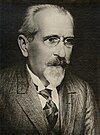
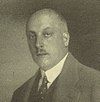

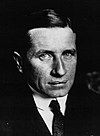
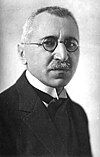
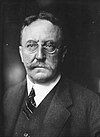
![Karl Hartleb [de]](/uploads/wikipedia/commons/thumb/2/22/Karl_Hartleb_%281927%E2%80%931936%29.jpg/100px-Karl_Hartleb_%281927%E2%80%931936%29.jpg?auto=webp)
![Vinzenz Schumy [de]](/uploads/wikipedia/commons/thumb/2/29/Vinzenz_Schumy_%281929%E2%80%931930%29.jpg/100px-Vinzenz_Schumy_%281929%E2%80%931930%29.jpg?auto=webp)
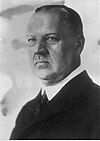


![Franz Winkler [de]](/uploads/wikipedia/commons/thumb/a/a4/Franz_Winkler%2C_Austrian_vice_chancellor.jpg/100px-Franz_Winkler%2C_Austrian_vice_chancellor.jpg?auto=webp)
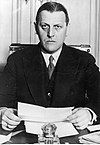

![Eduard Baar-Baarenfels [de]](/uploads/wikipedia/commons/thumb/8/8c/Rittmeister_Eduard_Baar_von_Baarenfels%2C_Dragonerregiment_Nr._2_%28BildID_15424610%29.jpg/100px-Rittmeister_Eduard_Baar_von_Baarenfels%2C_Dragonerregiment_Nr._2_%28BildID_15424610%29.jpg?auto=webp)
